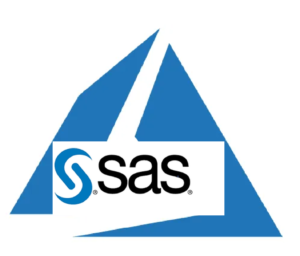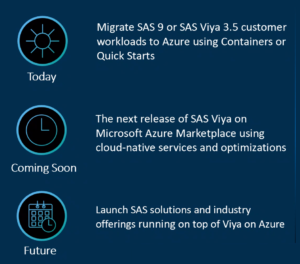
Blurred Lines: SAS and Microsoft To Go Deep in Analytics Partnership

The lines separating SAS and Microsoft analytics and AI software will blur as part of a major strategic expansion between the two companies announced today that will see Azure become the preferred cloud for SAS and technical integration across their respective product lines in the years ahead.
As part of the partnership, SAS has picked Microsoft Azure as the preferred provider for SAS Cloud, its suite of managed analytic and AI offerings. The company will begin the process of migrating SAS Cloud customers and offerings to Azure soon.
This deal is not exclusive, says SAS Executive Vice President and CIO Jay Upchurch. The SAS software will continue to be cloud agnostic, and customers will have the choice to run it on any cloud they want. “However, over the years ahead, SAS will migrate our internal operation and our global SAS Cloud business to Microsoft Azure,” he says.
In the second phase of the expanded partnership, SAS Viya, the company’s flagship analytics and AI platform, will enjoy “deep integration” with Azure, Upchurch says. A future release of Viya, identified as version 4.0, will be hooked into Azure services like Active Directory, Azure Kubernetes Services, and Synapse (Microsoft’s hosted data warehousing and big data analytics offering), which will enable Viya to be made available as both managed application as well as software as a service (SaaS) on the Azure cloud, he says.

SAS and Microsoft are embarking upon a three-step plan to integrate their respective analytics and cloud offerings
“We’re really excited about the path forward with Viya 4,” Upchurch says. “We have taken some significant strives forward with the technology, moving toward microservices and containerization of that platform to run in Kubernetes.”
Joint SAS-Azure customers won’t be aware when they have left a SAS property and moved into the Azure domain, and vice versa, says Ulrich Homann, the corporate vice president of Microsoft’s cloud and AI practice.
“We will effectively show how Azure Synapse and SAS Viya look like they’re a single product from a customer perspective,” Homann says. “You start in a Microsoft environment and ‘end’ in a SAS environment, and that will become effectively a seamless experience that the customer doesn’t have to think about, where does one end and where does one start?”
In the third phase, the two companies plan to build more integration surrounding specific SAS offering with software and services from Microsoft, including Dynamics 365, Microsoft 365, and its Power BI platform. They will also work together to build new industry-specific joint solutions that blend elements from both companies.
The expanded partnership does nothing to impact SAS customers who run on Amazon Web Services or Google Cloud. But SAS customers who run on Azure can expect to see additional benefits, Upchurch says.
“We love the idea of empowering our customers with choice,” Upchurch says. “We love the idea of removing seams to make that easy. And we’re both committed to the idea of enabling our customers to make intelligent business decisions based on the data they have. We do not want technology to be an obstacle there.”
While Microsoft has pushed into analytics with Azure, there isn’t as much overlap between Azure and SAS offerings as one might think, Homann says.
“We see that SAS assets really complement MS analytics and AI assets more often than not,” he says. “And together we believe we are much stronger solving our customers scenarios and challenges than if we would go alone.”
Related Items:
What’s Behind SAS’s $1-Billion AI Investment
SAS Previews Upcoming Enhancements to Viya Platform
SAS Charts AI Future, But Doesn’t Forget Analytics Past































